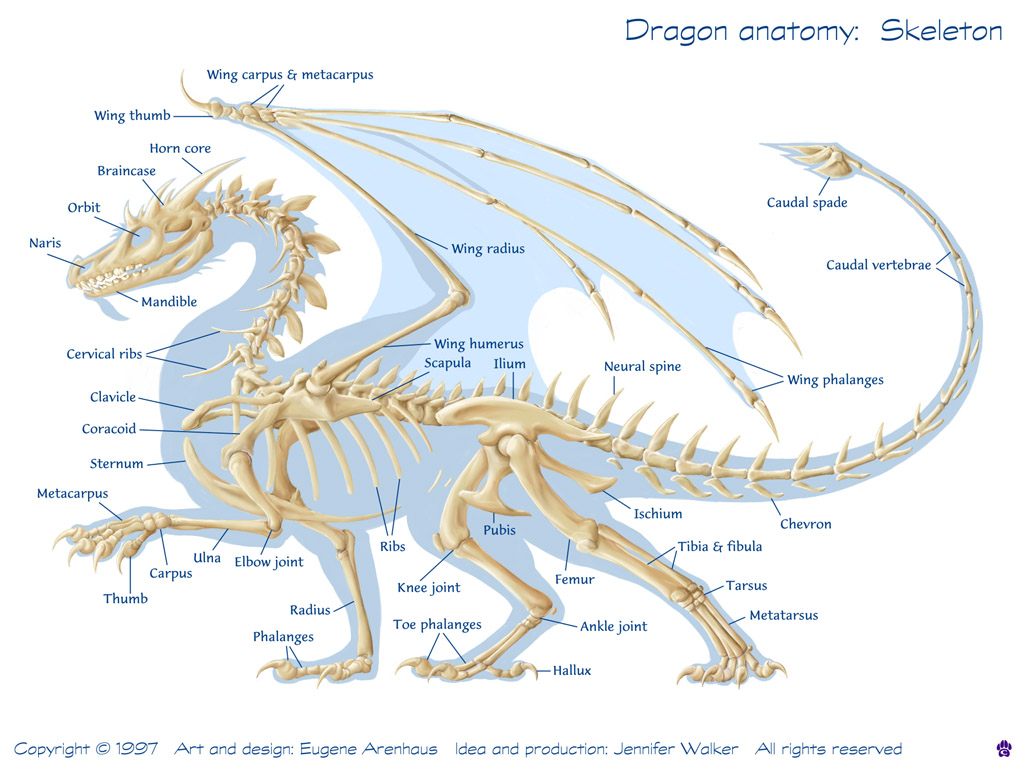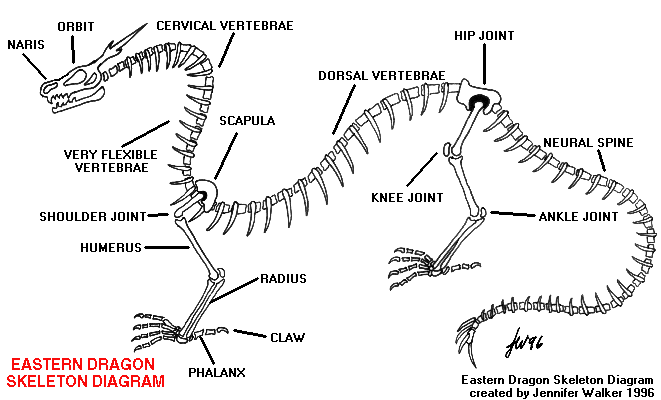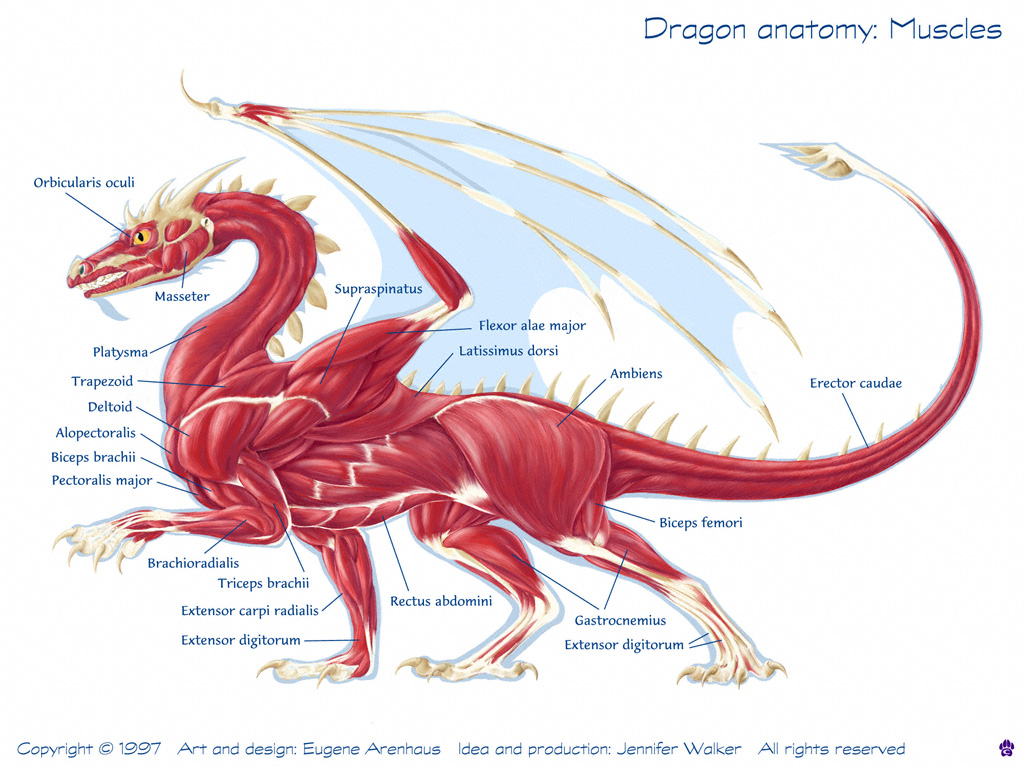Skeletal Anatomy
there are two types of dragons that have two different skeletal structure:
- The western dragons (European dragons)
- The eastern dragons (Chinese dragons)
The Western dragons skeletal structure consists of:
- a Large head, long neck, broad shoulders, thick legs, strong tail, and very large wings.
- The dragon's bones are very strong, but hollow and light.
- A dragon's jaw is large to accommodate the very strong muscles around it. The dragon is able to dislocate its jaw, as some snakes are able to do, to grab large objects.
- The dragon has two types of teeth because of it being an omnivore (It will eat meat and plant food). - The canine and incisor teeth of a dragon are long and razor sharp, - molars to chew their food instead of eating it whole.
- The shoulder bones are thick to handle the large wing muscles needed to fly.
- The wing "finger" bones are very long to wrap the thin flight membrane taut around them.

The Eastern dragons skeletal structure consists of:
- an extremely long, thin skeleton structure.
- It has a medium sized head, very long neck, short legs, small hips, and a long tail.
- This skeleton is very maneuverable because of the shape, such as a long snake is.
- It can twist and turn its body in all sorts of ways.
- This type of dragon does not have hollow bones, and the dragon's skeleton is thin because it doesn't need the mass to accommodate flight muscles.
- This dragon does not have any type of wings as it flies with earth-magic verses brute strength.

Muscle Anatomy
Western dragons have many more muscles then their Eastern dragons. This is mainly due to their massive flight muscles that have to lift their weight into the sky with the thrust of their wings. - Alar pectoral: main flight muscle
- Alar cleidomastoid: draws wings up and forward
- Alar deltoid: draws wing up and forward
- Alar carpi ulnaris: allows wings to warp and twist
- Alar triceps: fold and unfold wing
- Alar carpi radialus: allows wings to warp and twist
- Alar biceps: fold and unfold wing
- Alar lattisimus dorsai: draws wing up and back







